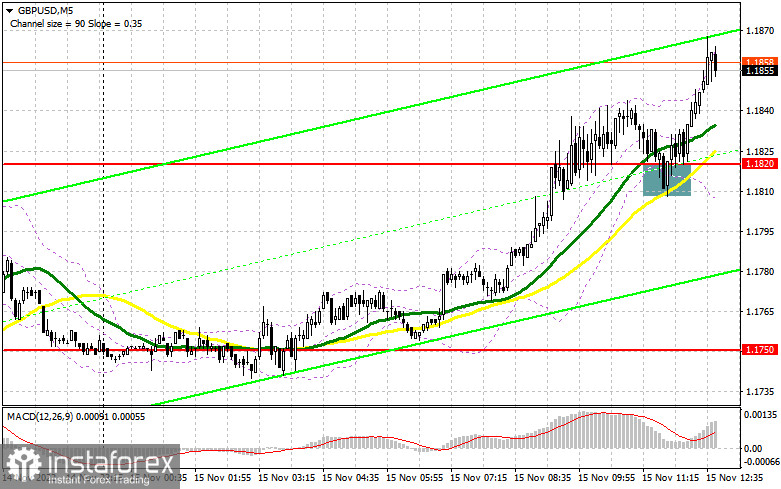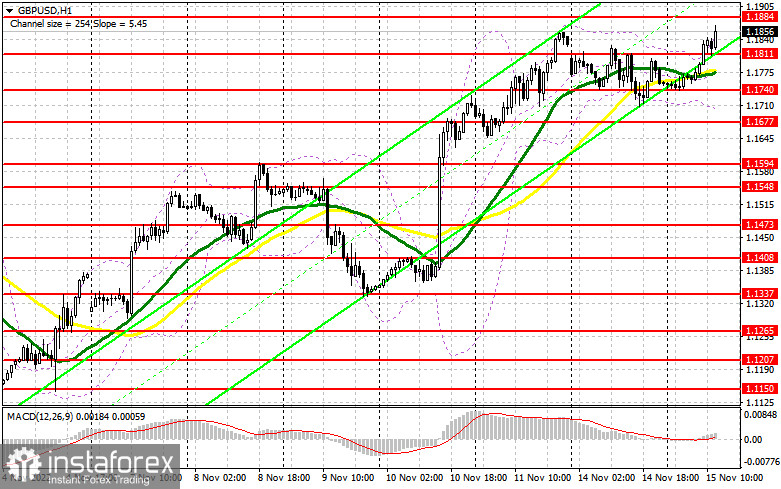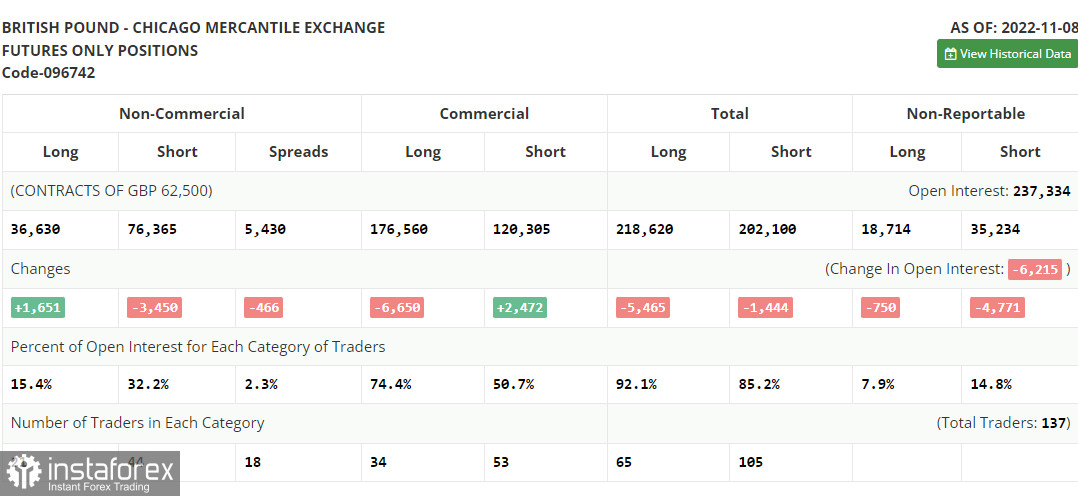
To open long positions on GBP/USD, you need the following:
The data that the unemployment rate in the UK has slightly increased did not bother traders at all, who continue to bet on the pound's growth against the background of general demand for risky assets. We expect data on US producer prices and the Empire Manufacturing Index in the afternoon. But even if these indicators grow, it is unlikely that the bears will be able to return to the market, so I bet on continuing the bullish trend. The best option for opening long positions will be a decrease and the formation of a false breakdown in the area of the new support level of 1.1811, just below where the moving averages playing on the side of the bulls are located. This will provide a buy signal to restore and update the 1.1884 resistance level, where sellers can already be seen. But even an update at this level will already prove that the bull market persists, as it was possible to reach new daily highs. A breakthrough and a top-down test of 1.1884 allowed us to build a more powerful trend with the prospect of a breakthrough to 1.1925. The furthest goal will be 1.1972, where I recommend fixing the profits. Small profit-taking will begin if the bulls do not cope with the tasks in the afternoon and miss 1.1811. This will return the pressure on the pair and open the way to 1.1740. In this case, you should only buy there if there is a false breakdown. I recommend immediately opening long positions on GBP/USD for a rebound from 1.1677 or even lower – around 1.1594, to correct 30-35 points during the day.
To open short positions on GBP/USD, you need the following:
Sellers fight back as they can, but having missed the monthly maximum, things can go out of the ordinary. Therefore, bears need to consider how to defend the resistance at 1.1884 – a test that can occur at any minute – especially given the recent bull market. Only the formation of a false breakdown at 1.1884 will signal the opening of short positions against the trend, pushing the pound back to 1.1811 – the support formed in the first half of the day. A breakthrough and a reverse test from the bottom up of 1.1811 and strong US data indicating the growth of the American economy, as well as hawkish calls from representatives of the Federal Reserve System – all this will give an entry point in the expectation of a return to 1.1740, where the moving averages are playing on the side of the bulls. The farthest target will be the 1.1677 area, where I recommend fixing the profits. A test of this area will negate all bullish prospects for the pound. With the option of an upward movement of GBP/USD and the absence of bears at 1.1884, the bulls will continue to return to the market with the expectation of a new wave of growth and the continuation of the upward trend. This will push GBP/USD to the area of 1.1925. Only a false breakout on this level will provide an entry point into short positions to move down. In case of a lack of activity, I advise you to sell GBP/USD immediately at 1.1972, counting on the pair's rebounding down by 30-35 points within a day.


Signals of indicators:
Moving Averages
Trading is conducted above the 30 and 50-day moving averages, which indicates further growth of the pound.
Note: The author considers the period and prices of moving averages on the hourly chart H1 and differs from the general definition of the classic daily moving averages on the daily chart D1.
Bollinger Bands
In case of a decline, the lower limit of the indicator, around 1.1695, will act as support.
Description of indicators
- Moving average (moving average determines the current trend by smoothing out volatility and noise). Period 50. The graph is marked in yellow.
- Moving average (moving average determines the current trend by smoothing out volatility and noise). Period 30. The graph is marked in green.
- MACD indicator (Moving Average Convergence / Divergence - moving average convergence/divergence) Fast EMA period 12. Slow EMA period 26. SMA period 9
- Bollinger Bands (Bollinger Bands). Period 20
- Non-profit speculative traders, such as individual traders, hedge funds, and large institutions, use the futures market for speculative purposes and to meet certain requirements.
- Long non-commercial positions represent the total long open position of non-commercial traders.
- Short non-commercial positions represent the total short open position of non-commercial traders.
- Total non-commercial net position is the difference between the short and long positions of non-commercial traders.





















